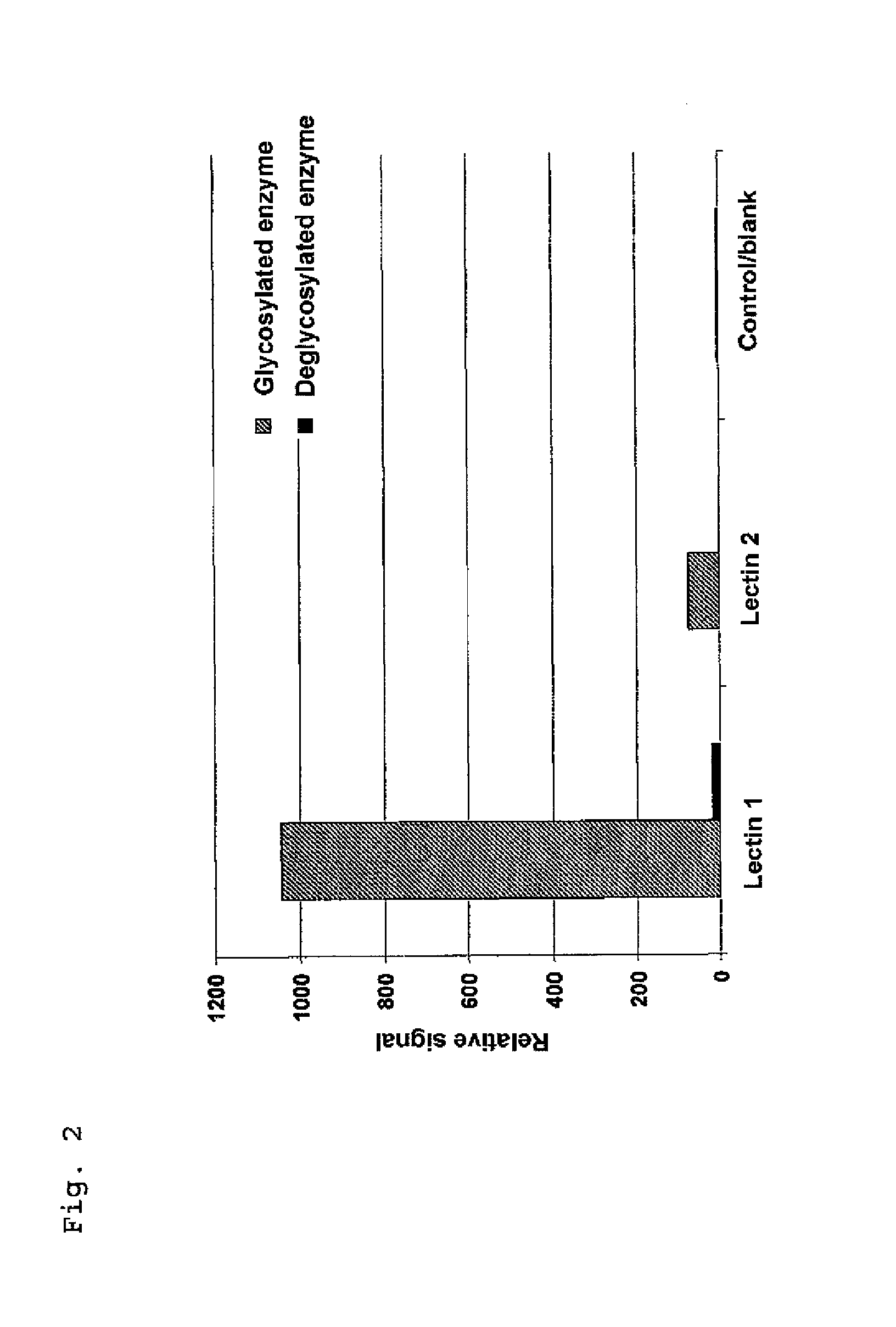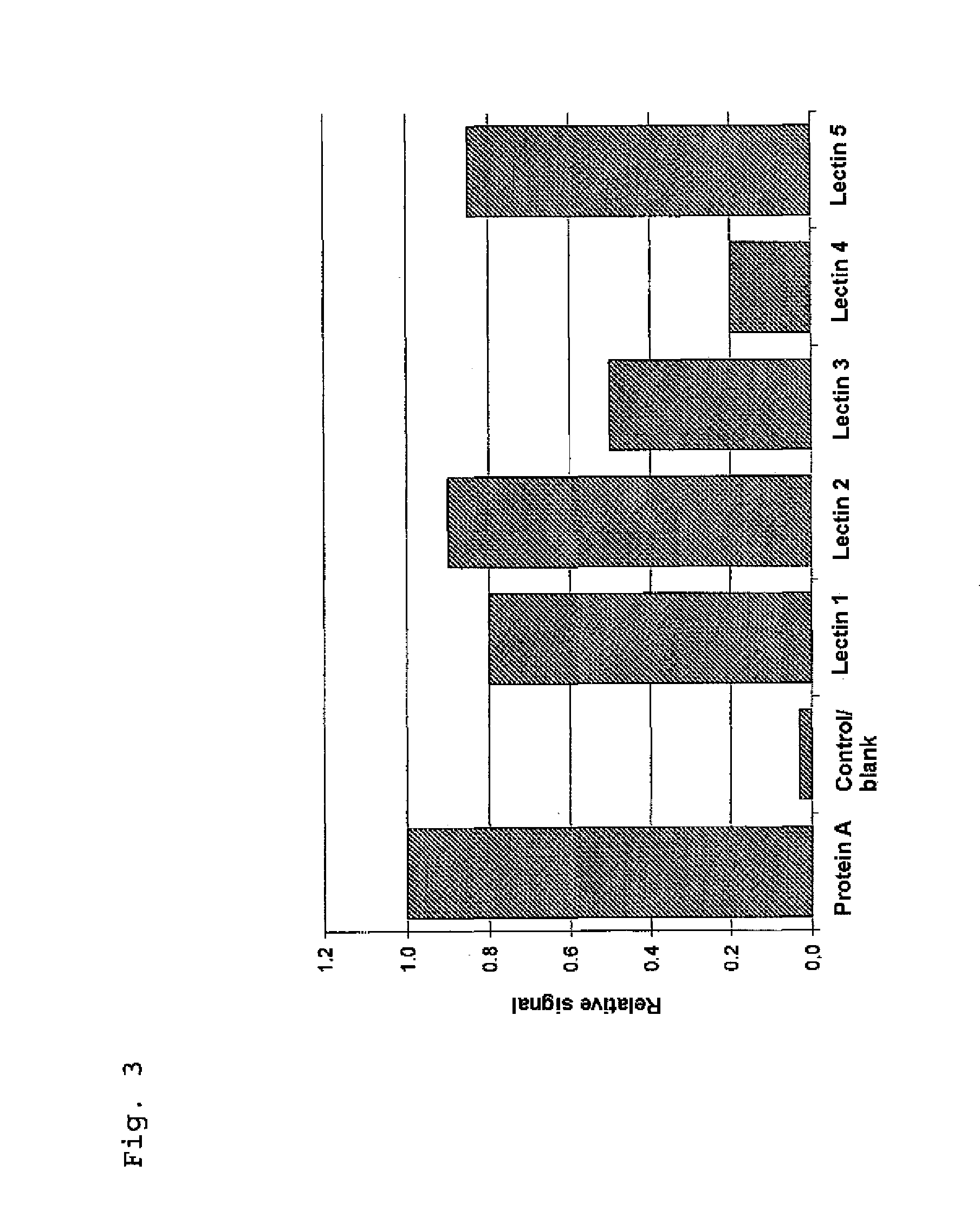Lectin-based glycan assay
- Summary
- Abstract
- Description
- Claims
- Application Information
AI Technical Summary
Benefits of technology
Problems solved by technology
Method used
Image
Examples
application example 2 (fig.2)
APPLICATION EXAMPLE 2(FIG. 2)
[0071]The surface of a microtiter plate was coated with Aleuria aurantia (1) and Galanthus nivalis agglutinin (2) lectins, protein A and serum albumin (blank). To determine which signal came from a glycosylated enzyme, a glycosylated enzyme and a deglycosylated enzyme (here: alkaline phosphatase) were measured for comparison. For elucidation, no sample, e.g. therapeutic IgG, was added in this case.
[0072]The results show a high signal of the glycosylated enzyme on the lectin, whereas the deglycosylated enzyme shows no signal. As expected, the protein A and serum albumin control surfaces show no binding of glycosylated enzyme and deglycosylated enzyme.
[0073]The application example shows that false-positive background signals can be excluded only when using a deglycosylated enzyme.
application example 3 (fig.3)
APPLICATION EXAMPLE 3(FIG. 3)
[0074]The surface of a microtiter plate was coated with an array of lectins (1-5), protein A as control and serum albumin (blank). The sample under investigation, a recombinant, therapeutic IgG, was subsequently placed thereon to bind to the lectins in accordance with the sugar structures present. For detection, a biotinylated detector (deglycosylated Fab fragment of a secondary antibody) was used which, following a wash step, was screened by means of streptavidin-alkaline phosphatase (deglycosylated, recombinantly from E. coli) and p-nitrophenyl phosphate substrate.
[0075]The results show signals of different height for the different lectins, which can be attributed to the particular sugar structures of the sample. The protein A signal is used for standardization to allow direct comparison of different samples. As demonstrated in the application example, the assay according to the invention is suitable for rapid, automatable and interference-free analysi...
PUM
| Property | Measurement | Unit |
|---|---|---|
| Structure | aaaaa | aaaaa |
Abstract
Description
Claims
Application Information
 Login to View More
Login to View More - R&D
- Intellectual Property
- Life Sciences
- Materials
- Tech Scout
- Unparalleled Data Quality
- Higher Quality Content
- 60% Fewer Hallucinations
Browse by: Latest US Patents, China's latest patents, Technical Efficacy Thesaurus, Application Domain, Technology Topic, Popular Technical Reports.
© 2025 PatSnap. All rights reserved.Legal|Privacy policy|Modern Slavery Act Transparency Statement|Sitemap|About US| Contact US: help@patsnap.com



